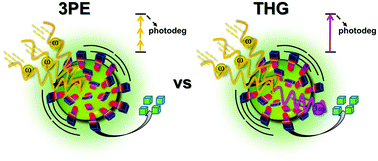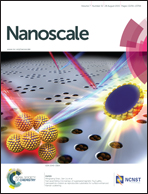Non-linear optical response by functionalized gold nanospheres: identifying design principles to maximize the molecular photo-release†
Abstract
In a recent study by Voliani et al. [Small, 2011, 7, 3271], the electromagnetic field enhancement in the vicinity of the gold nanoparticle surface has been exploited to achieve photocontrolled release of a molecular cargo conjugated to the nanoparticles via 1,2,3-triazole, a photocleavable moiety. The aim of the present study is to investigate the mechanism of the photorelease by characterizing the nanoparticle aggregation status within the cells and simulating the electric field enhancement in a range of experimentally realistic geometries, such as single Au nanoparticles, dimers, trimers and random aggregates. Two plasmon-enhanced processes are examined for triazole photocleavage, i.e. three-photon excitation and third-harmonic-generation (one-photon) excitation. Taking into account the absorption cross sections of the triazole, we conclude that the latter mechanism is more efficient, and provides a photocleavage rate that explains the experimental findings. Moreover, we determine which aggregate geometries are required to maximize the field enhancement, and the dependence of such enhancement on the excitation wavelength. Our results provide design principles for maximizing the multiphoton molecular photorelease by such functionalized gold nanoparticles.



 Please wait while we load your content...
Please wait while we load your content...